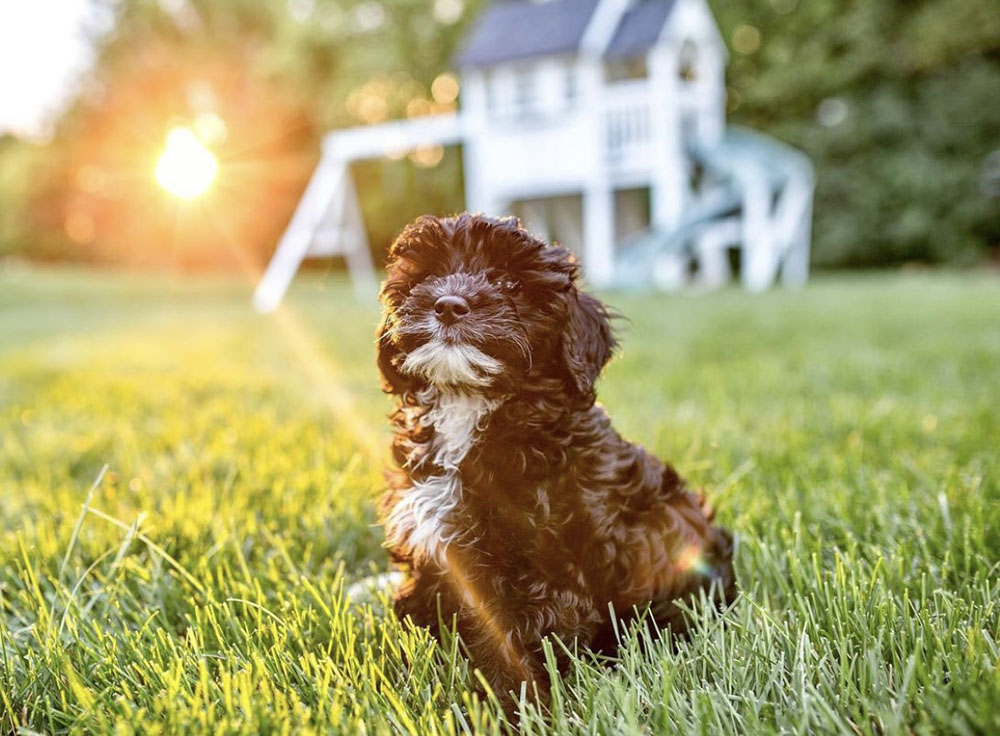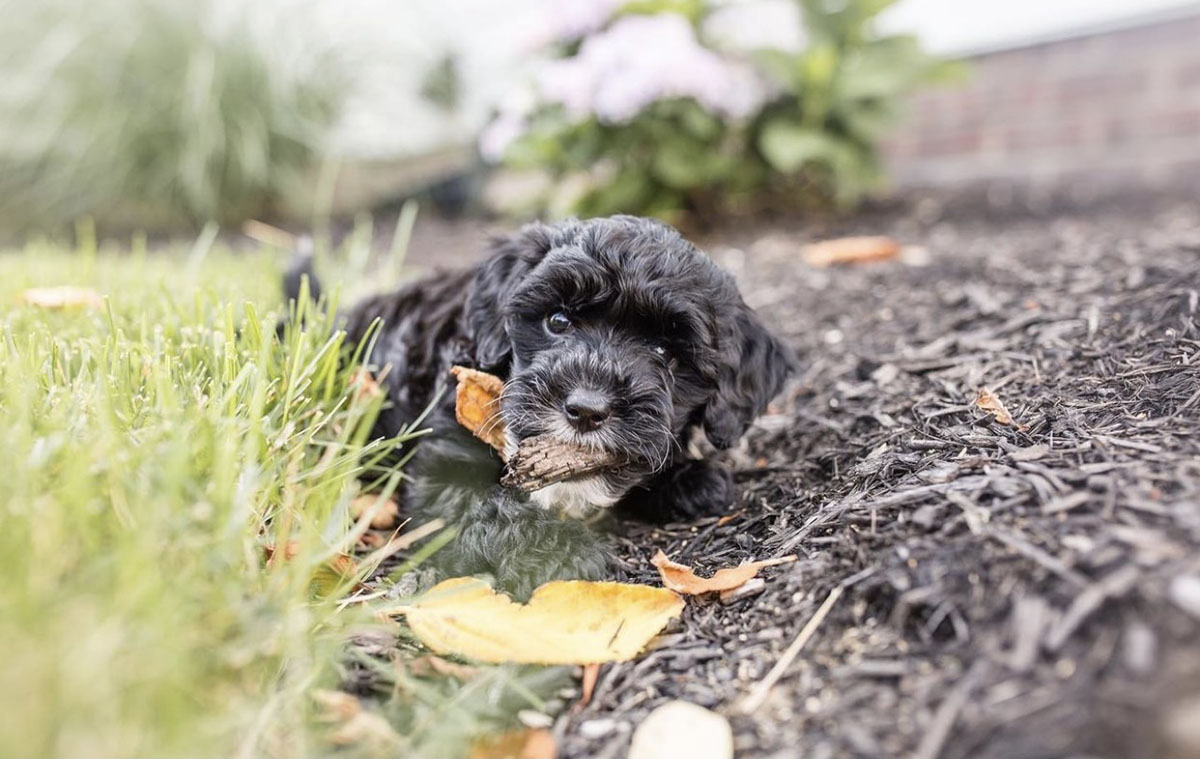
Control Fleas Naturally
By now you know that Maple Hill Doodles follows a holistic breeding program in all areas possible, and that includes using natural methods for flea control. Why do we avoid using harmful chemicals on or in our dogs? Because the conventional chemicals that kill fleas and ticks are mostly neurotoxins. They short-circuit those little bug nerves, causing various malfunctions such as seizures, paralysis and finally, death.
Those same compounds aren’t specific to fleas and ticks, however. Even when used as directed, the chemicals are harmful to dogs. Young puppies are especially at risk, but the effects also impact older puppies and even grown dogs. The skin — the largest organ of the body — absorbs everything applied to it. Your dog can develop skin irritations, seizures, autoimmune conditions, nerve disorders and even cancers. All from the chemical warfare on fleas and ticks, that sinks down through his skin and permeates his whole body.
Natural Dog Health Remedies has a very good blog post on Natural Flea Control explaining that fleas and ticks thrive in high temperatures and humidity. That’s why the attack is predictable. When August arrives, you’d better be prepared to beat back the onslaught. You’ll find a list of effective natural weapons to use and more information on the components.
From the Inside, Out
The very best thing you can do for pet, however, is this: Make sure he’s as healthy as possible. Feed him the best, species-specific diet (check out the Prey Model Raw Diet feeding plan we follow). Groom him regularly with a good slicker brush and flea comb. Keep him fit with outdoor exercise in the fresh air and sunshine. Give him a comfy, secure place to nap and sleep at night.
In addition, certain natural supplements can strengthen your dog’s resistance to fleas and ticks.
Immunity: Echinacea, Astragalus, St.-John’s Wort, Garlic
Waste elimination: Dandelion, Red Clover, Burdock Root
Antihistamine support: Nettle
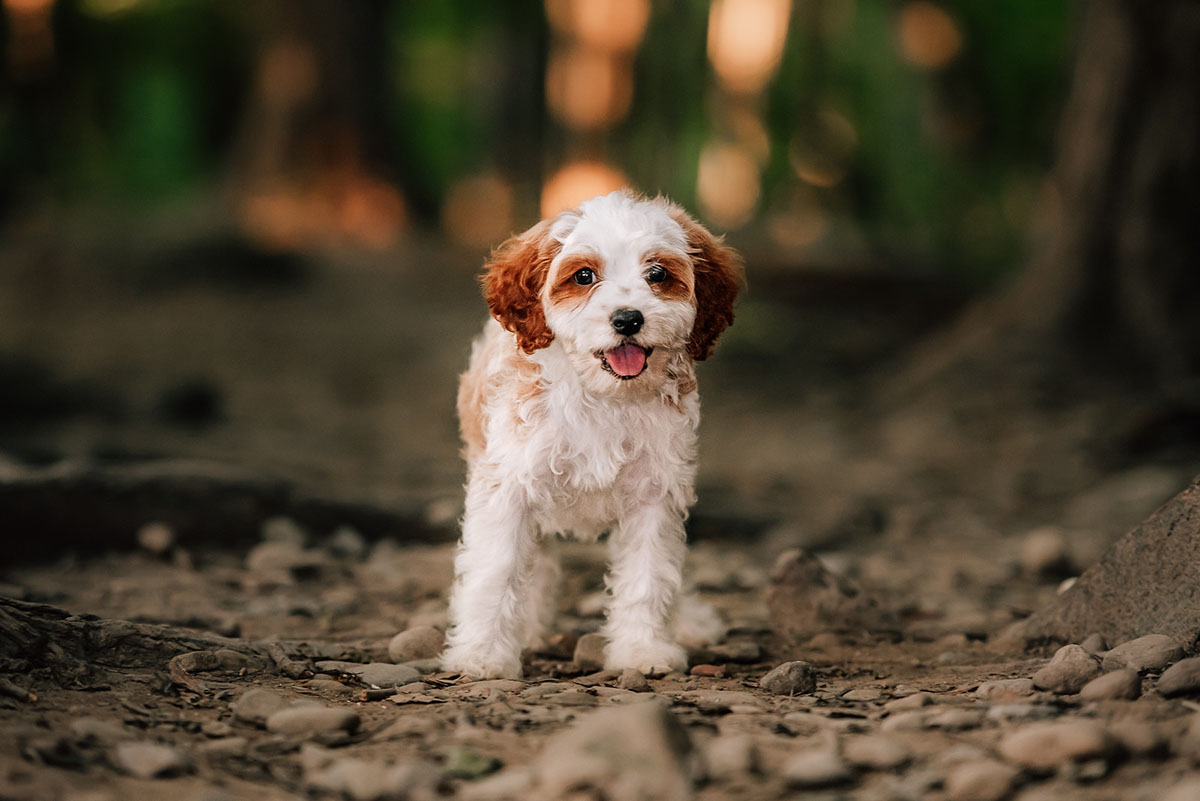
Integrated Pest Management (IPM)
IPM (Integrated Pest Management) means that the control of a pest is most effective when 3 or more methods are used. In your battle with fleas, use personal hygiene (grooming and bathing), securing the perimeter and the base (yard and indoors), and finally, direct countermeasures (dusting powders, essential oils and herbal flea collars).
It’s true that natural remedies are perceived as ‘less’ effective than chemicals. But take a few minutes to watch Dr. Karen Becker’s video presentation about fleas and how to deal with them. As a wellness veterinarian, Dr. Becker concentrates on correcting the underlying causes of discomfort. Your puppy scratches all the time? Okay, where do the fleas come from and how can you eliminate them? Dr. Becker has some solutions that may surprise you.
First Engagement with Fleas
The first line of defense is a good flea comb. Simple, portable, chemical free, effective. There are several kinds – all plastic, plastic handles, all metal – with handles or palm models. Get the best you can find, with long enough teeth to easily get through the hair down to the skin. If you can’t find a dog flea comb, a lice comb for humans will do nicely. This one has easy to follow directions for use.
Once you have your flea comb, use it on your puppy before his bath. Add a few drops of neem oil to his natural doggie shampoo, mix and shampoo. Neem oil is available online or at garden/farm centers (caution – not for use on cats!). Work it into Fido’s coat well, and rinse clean with warm water. Make a 1-to-1 mix of apple cider vinegar to water, as a final rinse. No need to wash it out, as ACV acts as an insect repellent.
Apple cider vinegar can also be used, mixing equal parts with water, as a spray between baths. And neem oil is useful as a spot application. Add 2 drops to 1 tablespoon of coconut oil and mix. Put it just behind your pet’s ears, between his shoulders, at the base of his tail, in his little armpits, and on his tummy. The ultimate advantage here is that neem oil is natural and non-toxic, so there’s no waiting between applications.
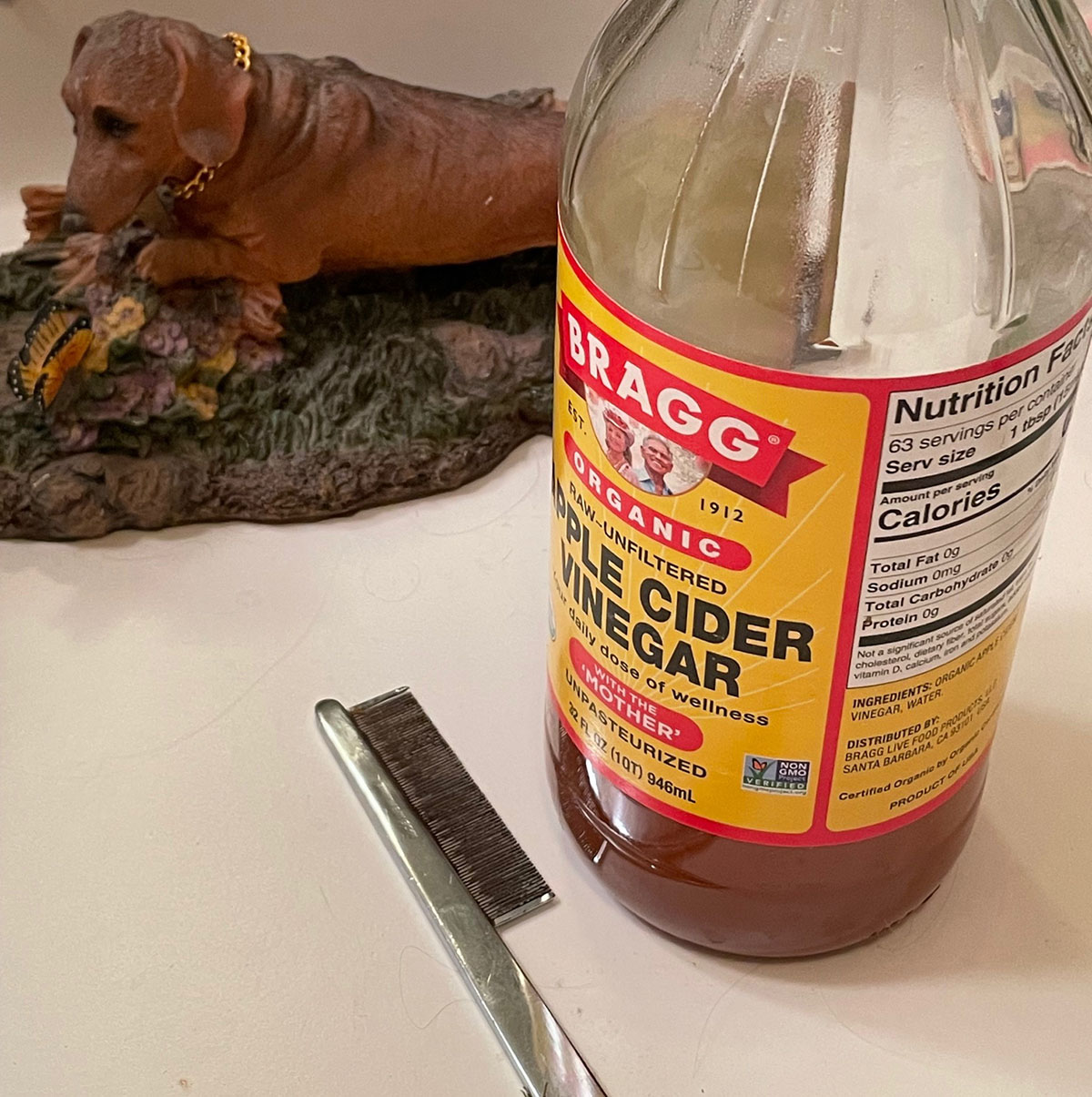
Secure the Area
Once the fleas have been driven back, take away their cover. In the house, wash all bedding in hot soapy water and dry thoroughly. While it’s in the laundry, vacuum in and around your dog’s bed, paying particular attention to the nooks and crannies. Fleas love to hide in the gloom and emerge when they feel your puppy’s body heat.
In the surrounding area, continue vacuuming everything, even under beds and sofas, and along baseboards. Wherever your dog happens to go, fleas may follow. They may jump off after hitching a ride from outside. You might even bring them in on your shoes!
Now your house is the cleanest it’s been since your folks from 3 states over called to say they’d arrive for a visit in an hour. Great! But how to keep the marauding fleas at bay?
Lay A Minefield of Diatomaceous Earth
Natural, food grade diatomaceous earth has been used successfully to kill fleas and their allies (ants, roaches, bed bugs, mites, et cetera). DE is the remains of billions of tiny diatoms, one-celled algae that actually live in glass houses. These phytoplankton are found everywhere, and are claimed to be responsible for half of the total oxygen on earth. What?
The ‘food grade’ designation refers to the use of diatomite (scientific term) in, among other things, the filtration of beer and wine, plus dietary supplements for various conditions. For our purposes, however, it’s the equivalent of broken glass for fleas and such to crawl over. The sharp-edged silica cuts the invaders and absorbs oils from their exoskeletons. They dehydrate and die a slow, agonizing death.
To lay your minefield, find a bag of DE (don’t use the kind designated for swimming pool filters), usually available at your local building supply store or farm supply. Use a cup measure and sprinkle the DE powder along the baseboards of each room, plus under the beds and couch. Take care not to breathe the dust. You can leave DE in place for 6 months at a time. It works, we can testify. Just be careful about breathing it when you vacuum it up. After collecting it in your vacuum cleaner bag, take the bag outside and dump it beside your house’s foundation.

Fight Back with Essential Oils and Herbs
Essential oils (EO’s) have many useful properties and flea control is a big one. Please remember, any EO should be diluted before putting it on your puppy’s skin. Either add a few drops to water in a spray bottle or after-shampoo rinse, or mix with an inert carrier oil to apply. The best and gentlest essential oils for flea control are Cedarwood oil, Peppermint, Lavender, Eucalyptus, Lemon Grass and Rosemary. Make sure you buy the very best organic quality you can find. Alternatively, you can infuse some of them yourself, from plants in your own garden. It just takes a while.
Make your own natural flea powder with essential oils and baking soda. So simple! Also, here’s a recipe for flea powder using a mixture of herbs right from your kitchen. Except for Yellow Dock… we’ve never seen it in anyone’s spice cabinet, though it is available as a dietary supplement.
And finally, use your pup’s wardrobe of cute scarves to make essential oil flea collars for him. Just put a few drops of the essential oil you like best on a scarf, tie it around your dog’s neck, and off you go. Smells wonderful, looks adorable, and keeps fleas away.
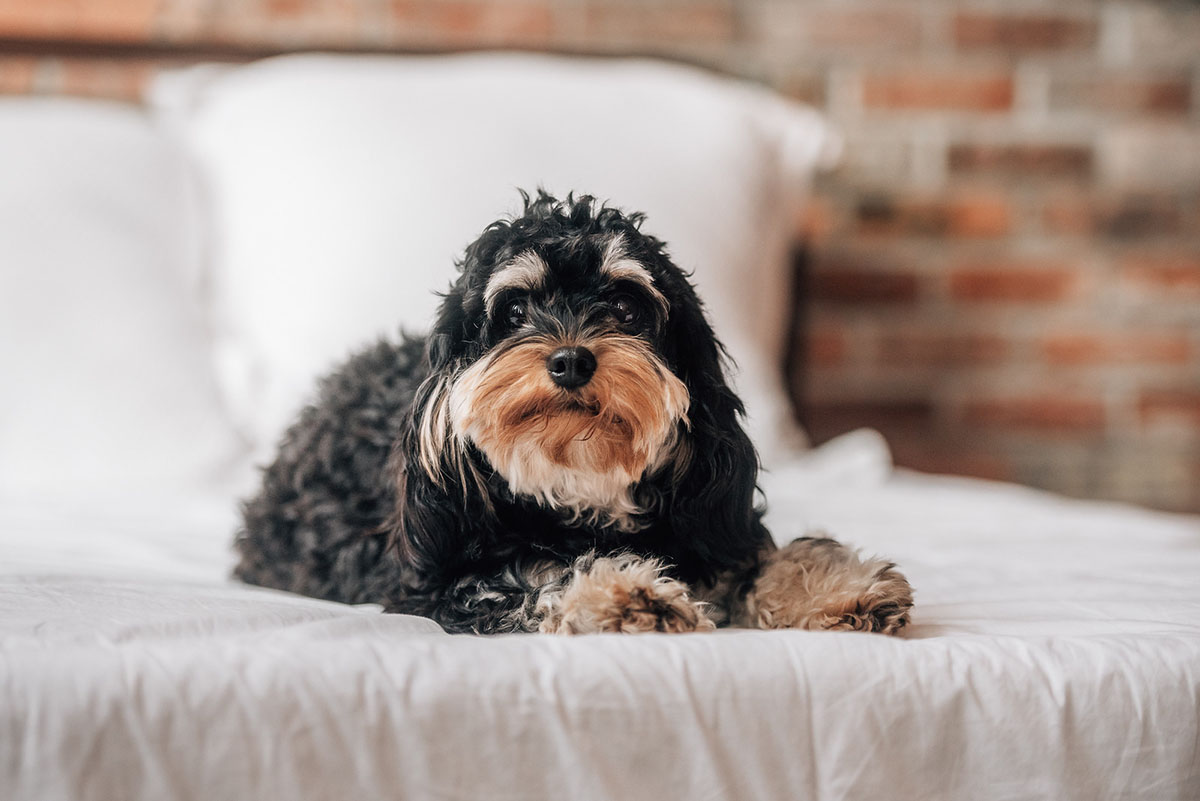
Parasites Are Attracted to the Weakest
Dr Becker stresses the vital importance of bolstering your puppy’s immune system as the basic defense against fleas and other parasites. And the very best tactic is to feed the freshest, most nutritional raw food available.
If you want to feed garlic, in the same way fresh is much better. The reason is that the medicinal components are only active for about 8 hours. So, garlic powder or capsules will only provide the aroma or the taste of garlic, virtually useless for prevention.
Dr Becker teaches the difference between preventives and deterrents, when you and your dog are exposed to fleas and ticks on walks or camping expeditions. And there’s a recipe for homemade flea/tick deterrent using absolutely no harmful chemicals, that incidentally smells fantastic.
There is tons more usable info in this video, so you’ll want to bookmark it, save it, archive it. Watch it over and over and take good notes.
Click on the button to explore Useful Links Part 2, where you can find more info about flea control and how to manage doggie allergies.


